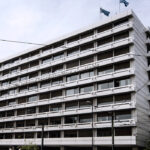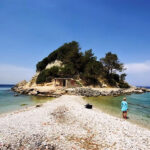The Venetians wanted to set the Cyprus under their control since their commercial and military expansion began to East Mediterraneanas they thought it could be an important military base. In 1468, the year of Jacob II of Cyprus, the House of Luzinian, married the throne in Venice, Catherine Cornaro. This option was a positive development for the Venetians, since they could now secure commercial rights and other privileges on the island.
But shortly afterwards, Jacob’s death would bring Catherine to the position of the regent, as she was pregnant, and in August 1474, after her son’s death, shortly before his first birthday, she would become a queen.
Under Catherine, who had power in Cyprus from 1474 to 1489, the island was actually controlled by Venetian traders. Finally, on March 14, 1489, she resigned and granted the administration to the Venetians, selling the island and abandoning it.
The population of Venetian occupied Cyprus consisted mainly of Greek Orthodoxwhile it was estimated that there were about 50,000 slaves. Venice favored the Catholicismwho thus experienced a huge increase in believers, causing some problems with the local Greek Orthodox priests.
During the period of Venetian domination, as it was natural, it was commercial activity that dominated the island, resulting in the conversion of many cities, such as Famagusta, to a place where Merchants and shipowners lived luxurious lives. The numerous churches built over the years by traders in various styles – thanks to which the latter took the nickname “district of churches” – reflect this reality.
In the first year of Venetian domination on the island, the Ottomans attacked the Karpasia Peninsula.
However, the conditions would not even calm down with the arrival of the Venetians. The risk of ever -expanding Ottoman Empire. Already in the first year of Venetian domination on the island, the Ottomans attacked the Karpasia Peninsula, looting and taking captives to sell as slaves. Nicosia, which became the administrative center, was fortified with walls, which have been imprinted by cartographer Jacomo Franco.
In addition to Nicosia, however, the Venetians considered that it was necessary to fortify all the cities of Cyprus. Indeed, this was done at Famagusta, Kyrenia And other cities, though most remained accessible. In 1539 the Turkish fleet attacked and destroyed Limassol. Nearly 30 years later, in 1567, the Venetians made the New fortifications of Nicosia – which are even in good shape to date – after the old walls built by the Franks. The new walls were star -shaped with eleven bastions, as this design was more suitable for artillery, and ensured better control to the city’s defenders. Changes were also made in the Castle of Kyrenia.
All of this, however, did not deteriorate the Ottoman Empire. Thus, on July 2, 1570, about 60,000 Ottoman soldiers – including cavalry and artillery – landed near Limassol and besieged Nicosia. The city was occupied on September 9th. A few days later, Kyrenia was occupied, and Famagusta resisted, projecting strong defense until August 1571. From 1571 to 1878, Cyprus would pass through a new chapter of Ottoman rule.
Column Curator: Myrto Katsiera, Vassilis Minakakis, Antigoni-Despina Poumenidou, Athanasios Syroplakis








